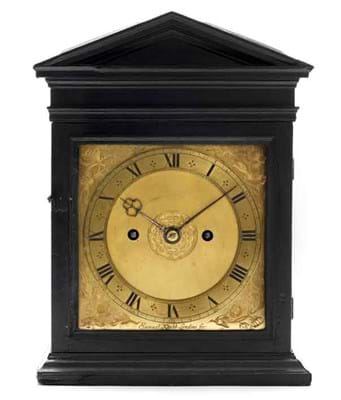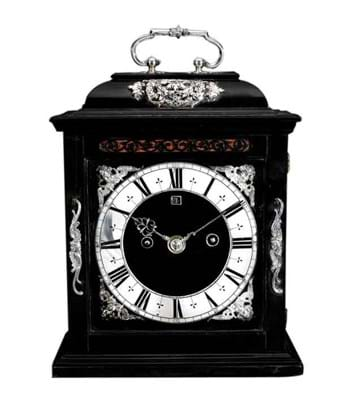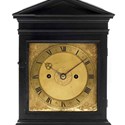This culminated in their select 103-lot offering on July 9 which majored on British material. It included the rarest of the 'golden age' clocks offered this season, a Samuel Knibb table clock, as well as a selection of other early bracket clocks and longcases, some well-regarded later precision timekeepers and one or two unusual entries along with some good examples of British and Continental horological standards.
The 16¼in (41cm) high Samuel Knibb dated to the third quarter of the 17th century was the highlight of their sale for many reasons.
Not only was this a new discovery by one of the earliest members of the Knibb family of clockmakers, but his output is also scarce and illuminating. Based on the other four known Samuel Knibb clocks, his work bears similarities to the work of his contemporary, and the 'father' of the English pendulum clock, Ahasuerus Fromanteel.
Bonhams would not say much about the origins of their discovery beyond the fact that it had been consigned from outside the EU but from a country with UK connections. It had sustained some wear and tear over the course of its life, principally to the ebony architectural case which had been entirely covered in black paint at some point in the last century.
Condition
It would have originally had a turntable base which was now missing, as were the brackets that secured the original movement, but, as Bonhams specialist James Stratton explained, on the plus side the movement was essentially all there bar a couple of wheels.
Little had been done to it for "probably 100 years", he reckoned. The 8½in (21cm) square dial carried a clear signature and was finely engraved to the spandrels with sprays of summer flowers and a Tudor rose to the matted centre and retained the original steel hands.
Anything that increases the known corpus of a rare maker's work by an additional 20% has to be regarded as a purchasing opportunity to be seized. The £200,000-300,000 estimate was probably realistic rather than conservative or bullish.
On the day, Mr Stratton, who was the auctioneer for the sale, opened the bidding at £120,000 and, after some initial hesitancy from the room, the bidding set off with a commission bid and two contestants in the room: Jonathan Carter of Gloucestershire dealership Carter Wright and Darrell Dipper of Winchester-based Gerald Marsh Antique Clocks.
They took the bidding to £380,000, at which point the hammer fell down to Mr Carter.
Afterwards he told ATG that they were thrilled to have bought what he deemed a seriously good clock and, though it will need restoring, he confirmed Mr Stratton's opinion on its original condition while adding that under the black paint the state of the original case was also good.
The only other Knibb in Bonhams' sale was a grand sonnerie longcase in a walnut marquetry case by Samuel's cousin Joseph, whom he is thought to have taken on as an apprentice. This had a good provenance to the Iden collection but less in its favour was that it was catalogued as "17th century and later". Bidding failed to meet the £60,000-80,000 guide and it was left unsold.
Sotheby's Clock
There were rather more examples of the Knibb family's work to be found in Sotheby's two July sales. Their Treasures auction on July 3 featured a fine small 11½in (29cm) high ebony and silver-mounted roman striking table clock by Joseph, c.1680 which their specialist Jonathan Hills felt was of a quality to merit inclusion in this select auction. It found a buyer at the lower end of what was a pretty bullish £300,000-500,000 guide.
Sotheby's July 10 Arts of Europe sale the following week had a further three Joseph Knibbs: two striking table clocks of c.1685, one in an olivewood case, the other ebonised, sold within estimation at £80,000 and £60,000 respectively, and a month-going longcase of the same period in an associated and rebuilt case offered for sale by The George Daniels Educational Trust made £68,000.
The buyer's premium at both Sotheby's and Bonhams was 25/20/12%.








